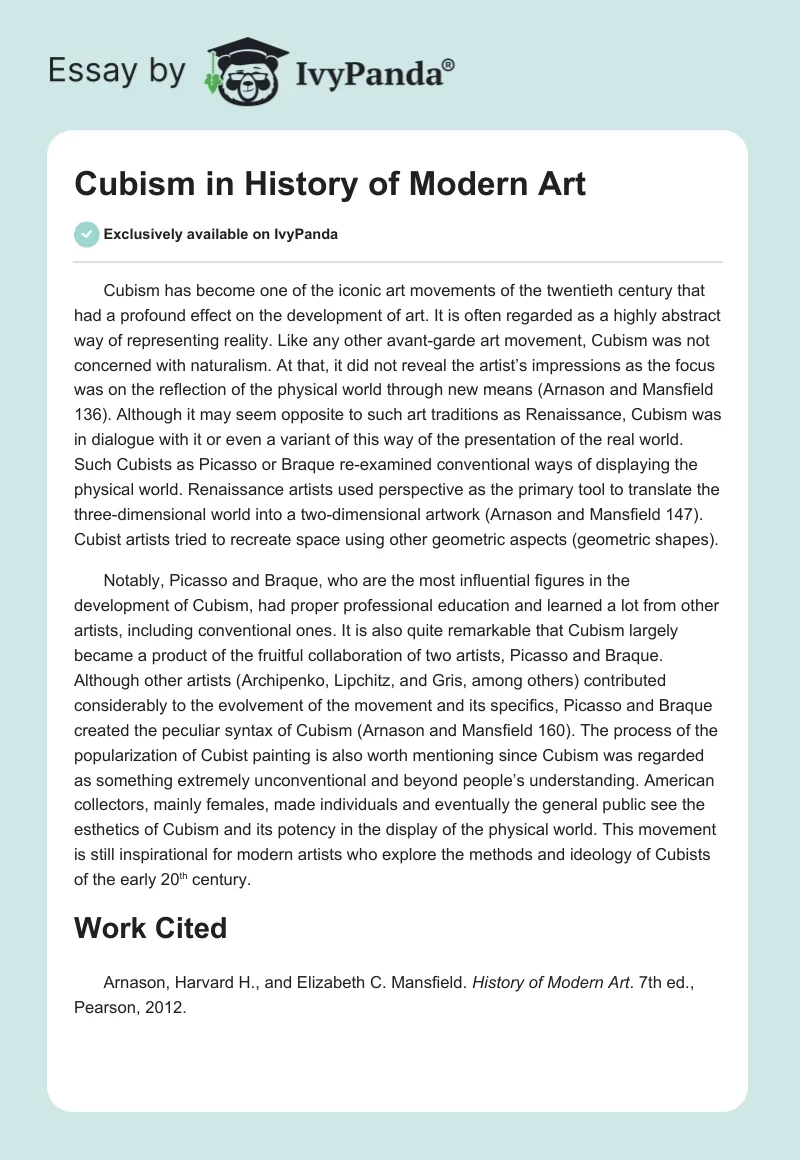Cubism has become one of the iconic art movements of the twentieth century that had a profound effect on the development of art. It is often regarded as a highly abstract way of representing reality. Like any other avant-garde art movement, Cubism was not concerned with naturalism. At that, it did not reveal the artist’s impressions as the focus was on the reflection of the physical world through new means (Arnason and Mansfield 136). Although it may seem opposite to such art traditions as Renaissance, Cubism was in dialogue with it or even a variant of this way of the presentation of the real world. Such Cubists as Picasso or Braque re-examined conventional ways of displaying the physical world. Renaissance artists used perspective as the primary tool to translate the three-dimensional world into a two-dimensional artwork (Arnason and Mansfield 147). Cubist artists tried to recreate space using other geometric aspects (geometric shapes).
Notably, Picasso and Braque, who are the most influential figures in the development of Cubism, had proper professional education and learned a lot from other artists, including conventional ones. It is also quite remarkable that Cubism largely became a product of the fruitful collaboration of two artists, Picasso and Braque. Although other artists (Archipenko, Lipchitz, and Gris, among others) contributed considerably to the evolvement of the movement and its specifics, Picasso and Braque created the peculiar syntax of Cubism (Arnason and Mansfield 160). The process of the popularization of Cubist painting is also worth mentioning since Cubism was regarded as something extremely unconventional and beyond people’s understanding. American collectors, mainly females, made individuals and eventually the general public see the esthetics of Cubism and its potency in the display of the physical world. This movement is still inspirational for modern artists who explore the methods and ideology of Cubists of the early 20th century.
Work Cited
Arnason, Harvard H., and Elizabeth C. Mansfield. History of Modern Art. 7th ed., Pearson, 2012.

